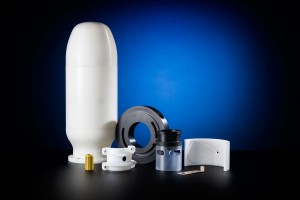
For years, companies have been debating the use of metal vs. plastic parts. New plastic materials offer strength and stiffness comparable to steel, and innovative processing capabilities allow us to machine plastic parts with tight tolerances. Combined with other benefits, many industries – particular medical and aerospace – are replacing their metal parts with plastic. Here are 5 areas in the metal vs. plastic debate in which plastic undeniably comes out on top.
Comparing Metal Vs. Plastic
- Production and lead time – As the saying goes, “Time is money.” Whether getting a product to market or waiting for replacement parts to get your production line back up and running, fast production times mean higher returns and reduced downtime. With a less labor-intensive process than metal, plastic parts can be processed and delivered quickly.
- Design cost and capability – Even with modern technology, metal is inherently difficult to shape and work with, prohibiting complex designs and shapes. Metal parts often require welding, grinding, die work, bending and rework on each individual part in order to achieve the design specs. As the complexity of the part increases, so does the cost of production. For plastic parts, however, complex designs have a minimal impact on production costs. That is because we can incorporate designs, shapes, branding, and surface textures directly into a part’s tooling. While this affects the upfront production costs to create the tool, it does not require additional secondary operations that lengthen production time and drive up part cost. Plastics also accommodate complex design options that cannot be produced with metal.
- Weight – We are seeing a high rate of metal-to-plastic conversion in the aerospace industry primarily because of weight reduction. Lighter-weight planes and vehicles mean greater fuel efficiency and lower fuel costs. A thermoplastic part can be 6 times lighter than the same part made from steel. Manufacture the same part from aluminum, and the plastic part would still be lighter by half.
- Strength-to-weight and strength-to-stiffness ratios – Traditionally plastic was unable to compete with the strength characteristics of metal. However, modern plastic composites perform as well as – and, in some cases, better than – metal when it comes to strength. Plastics tend to have a higher strength-to-weight ratio (how much stress the material can endure before failure divided by its density), as well as a higher strength-to-stiffness ratio (the material’s resistance to being deformed under stress per mass density).
Reading Plastic: Machining and Fabricating Durable Plastic Parts
At Reading Plastic, we know the value of a quality plastic part. We can precisely machine even your most complex parts and meet your tight tolerance needs. If you are considering converting from metal to plastic, call us at 610-926-3245.
